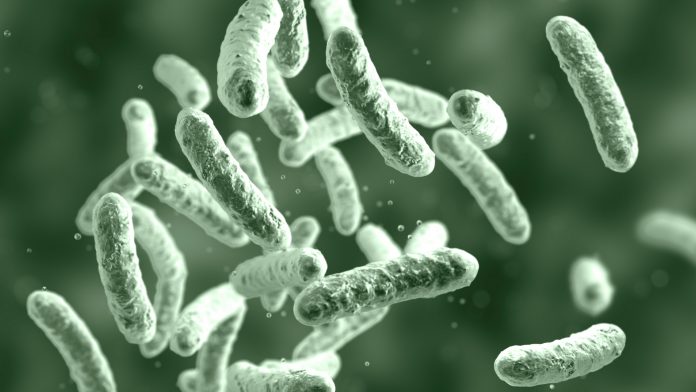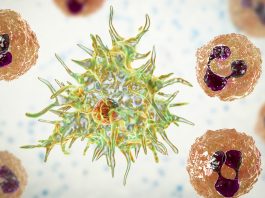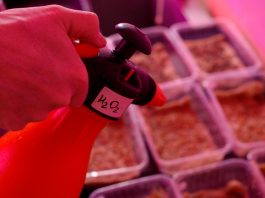The International Society for Microbial Electrochemistry and Technology aims to find solutions to overcome the challenges that have been preventing the implementation of METs in the real world.
The interest in microbial electrochemical technologies (METs) has boosted in the last decades, given their promising role to function as sustainable devices to tackle society problems, including the interconnected problems of energy scarcity, climate change and population growth. In METs, living microorganisms interact with electrodes allowing a spectrum of products (e.g. biofuels, bioelectricity, biogas, chemicals) to be obtain from wastes. Although the observation that microorganisms could interact with an electrode, and metabolically convert organic matter into low levels of current, can be traced back to the beginning of the 20th century, it was only in the 1990s that research on these systems gained momentum, with microbial fuel cells (MFC) being considered one of the first promising device to be developed.1
The design of a typical MET includes two compartments that can be separated by a cation exchange membrane, with an aqueous solution that provides the energy source for the microorganisms, and electrodes (an anode and a cathode) for the oxidation/reduction reaction to occur. Based on its applications, METs can be classified as MFC for the production of electricity, microbial electrolysis cells (MEC) for the synthesis of H2, microbial desalination cells (MDC) for water desalination, microbial electrosynthesis (MES) for the synthesis of chemicals, and microbial remediation cells (MRC) for cathodic reduction of oxidised pollutants (e.g. uranium, chlorinated solvents).
From these, MFCs are one of the most extensive studied MET.2 In these devices, the microbial culture donate electrons that are liberated by the oxidation of organic matter to the anode electrode, while, in the cathodic compartment, these electrons can be used to reduce oxygen into water. It is the connection between the anode and the cathode, that occurs through an external circuit, that provides the path for electrons to flow and electrical current to be produced. Given the high amount of organic matter present in wastewaters, these systems have been tremendously explored for wastewater treatment with the concomitant electricity production.3
In contrast, MES is a biocathode-driven approach that uses microbes to produce biofuels or added-value compounds from carbon dioxide and electricity.4 In these devices, the electrons and protons required for CO2 reduction come from oxidation reactions that occur at the anode. These can be abiotic or be driven by a biocatalyst. Until now, methane, formate, acetate, propionate and several alcohols have been produced by MES using CO2 as sole carbon source.5
Using METs as biosensors
A biosensor is an analytical device that integrate a biological process with a physical transducer to detect or measure the concentration of a specific analyte or other specific factor. Among the various sensing techniques, electrochemical (e.g. amperometry, potentiometry, conductometry, voltammetry) and optical techniques are the most widely used in the development of microbial biosensors.6
Alongside the various applications of METs, this technology can also be used as biosensors, where the analytical signal is originated from the current generated by consuming organic compounds, which is directly dependent on the microbial activity and the electron donor availability. METs have already been employed for water quality measurement (e.g. biochemical oxygen demand, toxic compounds), detection of volatile fatty acids during anaerobic digestion or fermentation processes, among other processes.7,8
Electroactive organisms and Extracellular electron transfer
The process by which microorganisms exchange electrons with an electrode is based on one of the oldest respiratory process on earth, the dissimilatory metal reduction, where microbes use metals as their terminal electron acceptor.9 This process plays an important role in biogeochemical cycles and has the potential to be used in METs. While in their natural environment, these organisms obtain energy by reducing metals, in METs the electrode can function as their terminal electron acceptor. In contrast to other respiratory processes, where freely diffusible gas or readily soluble compounds can easily enter the cell and be used as electron acceptors or donors, solid metals or electrodes cannot pass the cell membrane, and microbes have to overcome the physical barrier of the outer membrane or cell wall to be able to use them. This can be achieved by the process denominated extracellular electron transfer, where microbes by a direct contact, or indirectly with the use of soluble electron shuttles, exchange electrons with the solid electron acceptor.
Up to date, more than 100 electroactive organisms (including bacteria, archaea and yeasts) have been discovered.10 Although mixed microbial cultures produce more power output in METs, the operation of these systems with pure culture are preferred for the detailed investigation of the processes by which microbes exchange electrons with the electrode. Most of the knowledge obtained for extracellular electron transfer came from the study of Gram-negative bacteria, including Shewanella oneidensis MR-1 and Geobacter sulfurreducens, that have become the model electroactive organisms. Genetic and biochemical studies have led to the identification of multiheme c-type cytochromes as key players in extracellular electron transfer.11 Indeed, they were shown to form conductive pathways that allow electrons to be transferred from intracellular metabolism to electrodes, or vice-versa. Moreover, they can also be present at the cell surface, or associated with conductive appendages, such as pili or nanowires, facilitating the electron transfer process.12
Limiting factors of METs
The application of METs has typically been performed on a small scale, demonstrating the practical value of this technology, with only a few devices being implemented in a larger scale, including the world’s first microbial fuel cell pilot that was implemented in Yatala Brewery and the Ugold technology that convert human urine into clean liquid fertilizer.13,14
The main limitations for field application of METs are related to the efficiency and cost of materials, physical architecture and mode of operation of the bioreactor, as well as the amount and type of microorganisms and their level of activity. While the structural configuration of METs varies considerably and affect tremendously its efficiency, the materials used, including of electrode, may led to high internal resistance and electrochemical energy losses that decrease the performance of the system. Furthermore, the biological activity of the organisms presents in the systems also play a fundamental role in the performance of the technology. The understanding of the mechanisms of extracellular electron transfer would allow to overcome some of the limitations of METs.
Given the diversity of challenges of this technology, the optimisation of METs is only possible with the combination of different and complementary disciplines, including biochemistry, engineering, material sciences, electrochemistry, physics, microbiology, as well as mathematical modelling.
The International Society for Microbial Electrochemistry and Technology (ISMET)
Due to the promising role of this technology, over the last two decades there has been a steep increase in the research and community of microbial electrochemistry. This has led to the creation of the International Society for Microbial Electrochemistry and Technology (ISMET). This organisation, founded in 2011, aims to link researchers from the various areas of science and engineering to study the interaction between electroactive organisms and electrodes, and to find solutions to overcome the challenges that have been preventing the implementation of METs in the real world.
Toward this, a bi-annual international ISMET conference, alternating with three regional ISMET conferences in the in between years are organised by this society. This allows the community to get together and discuss current discoveries and find novel solutions to feasible technologies, as well as create networks to advance the field of METs. In this year, three regional meetings will occur: the AP-ISMET in Harbin, China, the EU-ISMET in Girona, Spain and the NA-ISMET in Los Angeles, USA. Since the community is very important for ISMET, this organisation awards postgraduate students, postdoctoral researchers and industry affiliates to acknowledge outstanding work in this field. These awards recognize the best scientific publication and the best breakthrough innovation that have been published in each year.
Other activities of ISMET include the terminology survey of the preferred terms used by researchers in the field of research of microbial electrochemistry and electrochemistry to establish a common language and terminology in this field, the implementation of the ElectricMicrobe100 project to sequence at least 100 genomes from bioelectrochemical systems, and the WISMET (Women in the International Society of Microbial Electrochemistry and Technology) that serve as a networking and mentoring collective to support female researchers in the METs field. To become a carbon neutral organisation, ISMET has also become involved in tree planting. This project, that started in 2014 during the regional meeting EU-ISMET, surged to off-set the carbon costs of the conference. Up to date, more than 70 trees have been planted in the Royal Botanic Gardens at University of Alcalá in Spain.
The community of microbial electrochemistry and the research on this field is still growing. This is visible by the large volume of research made in this field, as well as the expansion of different areas that are now being used to advance this technology. Indeed, the METs field is expanding beyond engineering and electrochemistry, requiring also knowledge and research on biology, microbiology and biochemistry. It is expected that further research, in particular in the better understanding of the extracellular electron transfer mechanisms performed by electroactive organisms, as well as in the development of novel designs and materials, will promote the progress and implementation of METs in commercial applications in the near future.
References
- Potter, M.C. 1911. Electrical Effects Accompanying the Decomposition of Organic Compounds. Proc R Soc London B Biol Sci 84
- Logan, B.E., and Regan, J.M. 2006. Electricity-producing bacterial communities in microbial fuel cells. Trends Microbiol 14:512–518
- Gude, V.G. 2016. Wastewater treatment in microbial fuel cells – An overview. J Clean Prod 122:287–307
- Rabaey, K., and Rozendal, R.A. 2010. Microbial electrosynthesis – revisiting the electrical route for microbial production. Nat Rev Microbiol 8:706–16
- Karthikeyan, R., Singh, R., and Bose, A. 2019. Microbial electron uptake in microbial electrosynthesis : a mini-review. J Ind Microbiol Biotechnol. 46, 1419–1426
- Su, L., Jia, W., and Hou, C. et al. 2011. Biosensors and Bioelectronics Microbial biosensors : A review. Biosens Bioelectron 26:1788–1799
- Prévoteau, A., and Rabaey, K. 2017. Electroactive Biofilms for Sensing: Reflections and Perspectives. ACS Sensors 2:1072–1085
- Sun, H., Angelidaki, I., and Wu, S. et al. 2019. The Potential of Bioelectrochemical Sensor for Monitoring of Acetate During Anaerobic Digestion: Focusing on Novel Reactor Design. Front Microbiol 9:3357
- Lovley, D.R. 2002. Dissimilatory Metal Reduction: from Early Life to Bioremediation. ASM News 68:231–7
- Logan, B.E., Rossi, R., and Ragab, A. et al. 2019. Electroactive microorganisms in bioelectrochemical systems. Nat Rev Microbiol 17:307–319
- Edwards, M.J., Clarke, T.A., and Richardson, D.J. 2019. Role of multiheme cytochromes involved in extracellular anaerobic respiration in bacteria. Protein Sci 1–13
- Costa, N.L., Clarke, T.A., and Philipp, L.A.A. et al. 2018. Electron transfer process in microbial electrochemical technologies: the role of cell-surface exposed conductive proteins. Bioresour Technol 255:308–317
- Gajda, I., Greenman, J., and Ieropoulos, I.A. 2018. Recent advancements in real-world microbial fuel cell applications. Curr Opin Electrochem 11:78–83
- Freguia, S., Logrieco, M.E., and Monetti, J. et al. 2019. Self-Powered Bioelectrochemical Nutrient Recovery for Fertilizer Generation from Human Urine. Sustainability 11:5490
Catarina Paquete
Europe Board Member
The International Society for Microbial Electrochemistry and Technology
Tweet @ISMETsociety
https://is-met.org/
Please note, this article will also appear in the first edition of our new quarterly publication.









